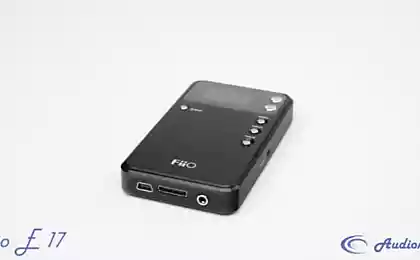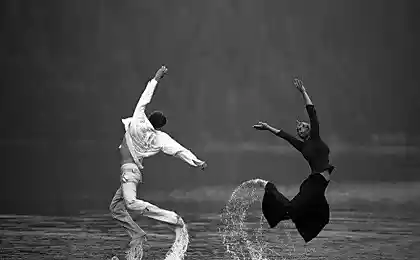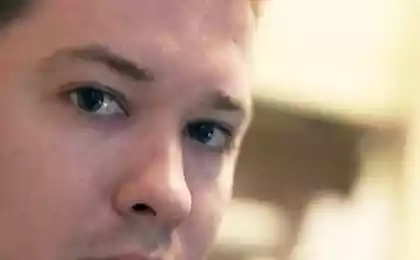A quality podcast What is this?
Many listeners and podcasters themselves felt some podcasts hobby, effortless, and treated them dismissively. It was possible to record the issues without putting much effort, without really thinking, and worrying about the quality of the recording and the characteristics of the audio, using cheap equipment and spending a minimum of time.
People who have never listened to podcasts, and boasted that mocked fans to record their conversations in the basement. Those who listened to these conversations, felt that issues come too often, they complained about the slowness and the like, that the duration of the episode was the duration of what they want.
Several lazy cynics still hold this point of view, the last effort to defend their beliefs - they do not want to believe that the missing something important. But the war has already been lost - that era sunk into oblivion.
Unfortunately, carefree attitude to the quality of the podcasts are still common. Over the past few days I have met a few people who believe that podcasters do not need a good microphone. They defend their position under the guise of anti-elitism, turning into an "anti-intellectualism».
Jason Snell ( Jason Snell ) and Casey Lisse ( Casey Liss ) already discussed in detail this topic and made the share of positive, but I would like to move the discussion a little another channel.
Arguments about whether the value of the equipment [1], and whether you should spend your hard-earned money on it [2] - this is a wrong and unhealthy digression, which needs to be discussed is actually:
Creating a podcast that is easy and pleasant to listen to, it is worth some effort. Blockquote> For blogs, it is important to choose the comfortable fonts and colors to correctly position the content on the page to make it easy to read. For podcasts, it is important to make it convenient to listen, and this can not be achieved without at least the nominal set of equipment and processing.
No need to spend millions to buy a fantastic equipment - will be enough cheap installation, plus a little bit of effort and desire to improve the sound of the podcast - it's like to make a couple of changes in the CSS-file to a blog look more readable.
Hardware h4> Need adequate microphone and headphones - it is not discussed. If you use the headset on the iPhone or laptop built-in microphone, then record your voice will sound hollow, as if from afar, and listen to your podcast will be difficult. Recording and installation should be carried out in headphones, has a neutral tone and reflect many aspects of recording, otherwise you will not notice potential defects, but that will certainly notice your listeners.
It is important to understand that the headphone does not necessarily have to be expensive, they just have to match the task at hand.
Suffice it to a simple USB-microphone with built-in headphone jack and a headphone monitor directly themselves, acceptable quality. The sound is better than most podcasts, if you use a microphone Yeti, and the disadvantages record will not escape from you with the headphones Sony MDR-7506 - all it will cost you less than $ 200. [3]
Quality equipment is necessary, not in order to please audiophiles as to you create podcasts sounded good enough to make it comfortable to listen to. In this case, people will not irritate the sound quality, and it will not be difficult to understand what you're saying. You need to buy at least some audio equipment, but not too expensive. There is much more good equipment that perhaps you would like to use, but it is not necessary. Suffice it to listeners clearly hear you, and you clearly hear what lay out.
That's all. There is nothing to do with elitism or anti-elitism.
Efforts h4> Many podcasters still refuse to deal with installing, align the sound recording and equip room. These items are able to raise product quality to a higher level podcasters work with professional microphones (provided that they do not), even if your microphone is only $ 50.
Installation and adjustment of the sound arrangement of the room - it sounds as if it takes a tremendous amount of time, but there is something that will cost you very little effort.
Construction House h5> If the room is not soft things, the sound of the podcast is to create the impression that you wrote down in the bathroom, it will reflect and create an echo, as a result - you will be harder to hear and understand.
You can buy a sound-absorbing foam panels ... or just take a blanket and cover their items in the room. If you have a mobile recording rig and a laptop, you can write in the dressing room or laundry room, where drying clothes. The sound is terrific.
That's all. "To equip the room" only means "fill the room with a sufficient amount of soft things, to absorb the echo».
If we approach the question of the sources of noise even in good faith, then you need to make sure that the cooling fan of your MacBook never drive at maximum speed while recording the podcast - to achieve this is not so difficult. If you have a bunch of computer peripherals, makes a noise, it is necessary to switch off all that is not necessary or possible to record in another room with a laptop. Otherwise, the hum on the record will give the impression as if you are writing in the server.
These core solutions and techniques will allow the audience to hear you better and focus on what you're saying, without being distracted by extraneous noise.
Adjusting audio h5> The sound of your podcast will be much better with these two simple and small adjustments:
- Equalization: The voices recorded with too much bass sound muffled, as if through a pillow, which is why it is difficult to make out the words; many also stress the microphones and "turn up" the sharp sound of voices in the frequency range of 1-2 kHz, making them high and nasally. In any sound editor, select and apply equalizer settings, reducing the amount of bass (and perhaps some of the high-pass), and the lower the level in the range of 1-2 kHz. The graph will resemble flattened and stretched across the width of the letter "m" (work with medium frequency range, because the ideal position to control the votes of different people will differ).
- Dynamic range compression (or simply "compression »): Compression" will fit "volume levels in a narrow range, so that all participants podcast talking about the same volume. Most audio editors have a simple compressor with a single regulator - move it up as long as the sound is not loud enough and clear, but without distortion [4].
Installation h5> Now let's talk about the most incomprehensible and frightening words associated with the creation of podcasts - on mounting.
Most people assume that doing the installation - is meticulously removed all the "a" or "e" in a speech to eliminate stutter or pause, which is quite tedious and takes hours - so they do not, believing that "can not". But this type of sound editing is needed (rather, it is a bad idea), but even here there are things which are quite easy to achieve.
A good installation - it is not cut all the words-parasites, and, basically, the removal of unnecessary episodes of the show.
Firstly, as a listener I do not have to know that you are using Skype i>.
If you have trouble connecting the beginning of the show, someone needs to adjust the microphone or someone call is dropped in the middle, cut all these points and start right away with the part where everything works. There's nothing less interesting than listening to a podcast, discussing its technical difficulties.
If the host connection problems, and his voice is lost permanently due to the low bit rate Skype, if there is an echo and voice distortion (vibration), or missing parts of words, it's very distracting listeners. In such cases, stop the conversation, fix the connection issues, if possible, and then cut this time, so he did not get into the finished show. If someone is leading a regular experience such problems, try to use the method of "two-way recording" when each of the participants individually record sound with his hand, and then you reduce everything together. It's not as difficult as it looks.
The art installation is to remove part of the show, which make it much worse, but removed so that the listener does not notice their disappearance.
If the conversation stops until someone "google" answer to the question, or the background barking dog - cut this part, but only if none of the participants did not pay attention to it. Once you get used, you can record podcasts at the same time making it easier to edit yourself if your dog begins to bark in the middle of a sentence, wait until it stops, and then start the idea first.
If you notice the time of occurrence of such problems, they fix takes several minutes. Doing this makes sense, even if you want to listen to all the show as a whole, in order to make sure you did not miss anything. You are going to ask for hundreds or thousands of people spend hours of their lives listening to your work, I'm sure it's worth it to spend an hour of their lives, and check account for obvious omissions. If you do not have time to listen to the show as a whole, it might be worth thinking and make it shorter?
I have no time! I do not audio editor! It is just a podcast, who cares? H4> ludicrous idea that working on podcast, do not make a special effort could make sense when the media space infancy (and perhaps did not make sense even then), but These days are long gone.
Listening to your podcast audience is spending their time, and this time could go to the audition a ton of other great podcasts. To give the podcast a decent amount, you need to make a minimum of effort, which is not related to the madness on the sound quality - it is a manifestation of respect for the audience, her time, which also gives you a better chance of success.
If you have "no time" (read "do not want to waste your time") to make a podcast pleasant to listen to, or do not want to buy even the most simple and inexpensive equipment to achieve acceptable sound quality - you do not take this activity seriously. You are a waste of time and did not really want to do podcasts, perhaps they do not like. Why bother? Why do you have to respect your audience, if you do not respect them?
We take it for granted in blogging. You will not go far if publish the text of the hundreds of thousands of words with typos and without division into paragraphs gray font on a black background, you do not even adjusted for yourself. Nobody will call you arrogant to the idea that writers should avoid misspellings of words and view writing before publication.
It is not good if you do not care about your podcast.
Principles of Creating a podcast is easy. Their creation, as well as the creation of blogs, requires a minimum investment in equipment and some knowledge about the basics of media sphere.
You can instruct the installation of someone else, but not necessarily, and I personally believe that it is not necessary to do so. If you are a person who cares what you write and what it looks like, then you should take the same care of the podcast.
If you make some efforts, your audience will thank you for it. The audience of podcast listeners may not be the biggest, but the best - that's for sure. You will not find anywhere else such enthusiastic, loyal and loving fans. It is known by the creators of podcasts, advertisers know it, the audience knows it.
You just need to show that you care about what you are doing.
Notes: h5>
- It is important, but to a lesser degree than you think.
You'll have to spend the money, but there is no need to spend a lot. recommendations Dan Benjamin, at the choice of equipment are great. A more detailed settings compressor outside the scope of this article, but if you're interested, the site Lynda.com - a frequent contributor to our podcast has excellent видео on the topic.
Transcripts of our podcast "Sound»: blockquote> Digital to Analog Converters: FAQs ; Portable audio: Myths and Reality ; Every engineer dreams of making S-90
Source: geektimes.ru/company/audiomania/blog/250310/























